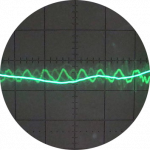@johnmo yup you are correct, that looks perfect.
@robl I was looking at the double sided mounts and they seem ideal since the sun up until lunchtime is at the rear of the house rising at the left and moving across to the right then over the house when we lose the sun late lunchtime. The sun then would focus on the opposite panels on the garage until sunset. The price of these I thought was too much for what they were and that I could make ones at a fraction of that as you did. I think purchase the rails and mount them on the frame.
Aluminium C-channel is a versatile way of creating frames for PV panels.
Better still if you can source aluminium T-nuts which fit it.
I picked up 80m of the stuff in a clearance sale from one of the large 'aluminium online' outlets.
Save energy... recycle electrons!
Posted by: @david999I was looking at the double sided mounts and they seem ideal since the sun up until lunchtime is at the rear of the house rising at the left and moving across to the right then over the house when we lose the sun late lunchtime.
Erm, that won't do what you think...
The PV panels are going to be wired as a series string in order to achieve the high-voltage input for the inverter.
So the maximum current which the string allows through, is dictated by the resistance of the cells which are in shade.
Save energy... recycle electrons!
@transparent these are the little bugs that catch you out and why I want to learn more about solar before i engage in the upgrade. So in theory would best practice be to capture the sun in the morning as it swings from east to west as my panels face southeast about 40 degrees and therefore orientation of panels to direct south on garage being best option. Or turn them to face north catching the later sunlight. My batteries discharge to the grid between 4and 5pm and this option could recharge them to a degree for later use. However so many parameters and one being feedback during the day and of course harnessing sunlight during the daylight, as little as it might be in the winter months would help with the heat pump costs. It’s my first year with all this and this winter will be the time to mess about with flow temps etc on the heat pump, but every bit helps. So much to learn, but that’s the way I’m wired
You are asking all the right questions @david999
Take time to chew over what you're picking up here on the Forum.
Let me also point out the mechanical characteristics of a typical solar panel.
Nowadays they are all roughly the same size (1m x 1.6m) and weigh around 20-24Kg.
That's down to the practicalities of one man lifting them into position whilst perched on a roof!
When you first pick one up it's surprisingly flexible.
The required rigidity is achieved when you mount it onto roof rails.
For that reason the spacing between those rails is significant.
You want the rails spaced about 20% and 80% along the long-edge of the panel:
The professional fixing clips are of two types
- a clip which fits between two panels, holding each in place
- an end-clip
The dimensions of the clips by some manufacturers have to be matched to the depth of the panels.
Eg: for a 40mm panel, I require a 40mm clip.
I used Fastensol roof rails on my main sloping roof. On their system, the inter-panel clips are universal, regardless of the panel thickness.
But I still needed to specify the correct depth for the end-of-run clips.
I cut a sliver of spare EPDM roofing rubber to fit between the fixing clips and the PV panels.
That increases the friction between clip and panel without me needing to exert a lot of force onto the bolt.
As you can see in the above photo, I used a Wera 1/4-inch Zyklop hand-wrench to tighten the bolts.
Professional installers often use a power-wrench...
... which is why they mangle the bolt heads and strip threads in the aluminium T-nuts 😥
Save energy... recycle electrons!
Posted by: @david999@robl I was looking at the double sided mounts and they seem ideal since the sun up until lunchtime is at the rear of the house rising at the left and moving across to the right then over the house when we lose the sun late lunchtime. The sun then would focus on the opposite panels on the garage until sunset. The price of these I thought was too much for what they were and that I could make ones at a fraction of that as you did. I think purchase the rails and mount them on the frame.
You will require solar panels containing bypass diodes, which basically 'bypass' the shaded panels, or even the shaded portion of an individual panel.
I seem to remember that my panels contain 6 bypass diodes in each one.
Posted by: @derek-msolar panels containing bypass diodes,
Or add optimisers, which cost as much or more, than a panel.
Almost all PV panels now incorporate bypass diodes.
But the ones I've actually taken apart and looked at are intended to bypass a section (column or row) within a panel, rather than the entire panel.
Ie, the panel still operates if a leaf or a splodge of bird-poop covers one silicon slice.
Bypass diodes operating in the fashion which @derek-m suggests will offer nothing towards the voltage that gets 'seen' by the inverter.
So if the MPPT algorithm in the inverter requires 150v minimum, you might find yourself dropping out of the bottom of the range.
Save energy... recycle electrons!
Posted by: @david999@transparent these are the little bugs that catch you out and why I want to learn more about solar before i engage in the upgrade. So in theory would best practice be to capture the sun in the morning as it swings from east to west as my panels face southeast about 40 degrees and therefore orientation of panels to direct south on garage being best option. Or turn them to face north catching the later sunlight. My batteries discharge to the grid between 4and 5pm and this option could recharge them to a degree for later use. However so many parameters and one being feedback during the day and of course harnessing sunlight during the daylight, as little as it might be in the winter months would help with the heat pump costs. It’s my first year with all this and this winter will be the time to mess about with flow temps etc on the heat pump, but every bit helps. So much to learn, but that’s the way I’m wired
As far as orientation of the panels is concerned it depends upon your primary objective. If you wish to maximise generation, then South facing would probably be best, particularly at an angle.
Generation over a longer period of time could probably be achieved by having a number of panels Eest facing, a number South facing, and a number West facing.
@derek-m I have looked at some houses where panels are fitted south and north, presumably on separate strings. During winter whats the minimum production on panels before the inverter switches off. Do you actually get anything worthwhile during these months.
- 26 Forums
- 2,342 Topics
- 53 K Posts
- 303 Online
- 6,000 Members
Join Us!
Worth Watching
Latest Posts
-

RE: Advice on internal circulation pump noise
I agree with @jamespa that your buffer tank and seconda...
By GrahamF , 9 minutes ago
-
RE: Who's your electricity provider and what's your tariff?
I cannot think Greg needs to be so accessible at octopu...
By Batpred , 20 minutes ago
-

RE: Heat Pump Heats the House… But It’s Not Cosy. Emitter Changes or System Tweak?
A quick Google search showed that building regulations ...
By GrahamF , 43 minutes ago
-
RE: Octopus Cosy Heat Pump Owners & Discussion Thread
@agentgeorge I first heard (read) about it on FB this m...
By AndrewJ , 43 minutes ago
-
RE: New Fogstar 15.5kWh upright solution
It is a matter of luck. 2ith Fogstar "instructions", to...
By Batpred , 47 minutes ago
-

RE: Speedcomfort radiator fans
@deltona the way the links were added broke the page. A...
By Mars , 1 hour ago
-

RE: Setback savings - fact or fiction?
I agree! Even more so if we get an answer! But the chal...
By cathodeRay , 3 hours ago
-
Thanks for the tips. The engineer booked to do my (ne...
By 2StacksTerry , 5 hours ago
-

RE: Refrigerant R32, is it now banned in the EU from 1st Jan 2027 for monobloc ASHPs?
This has been delayed from what I believe to be this ye...
By dgclimatecontrol , 7 hours ago
-
RE: Are We Sleepwalking Into Another Race to the Bottom?
this is why I provided current flow temperatures in the...
By ksim , 7 hours ago
-

RE: Why Millions of UK Homes Struggle With Heat Pumps
There's many homes that would be quite a disruption for...
By dgclimatecontrol , 7 hours ago
-
RE: Ecodan unable to hit legionella target temp - what's the consensus?
@rhh2348 ...maybe this option is what you want? Alter...
By benson , 8 hours ago
-

RE: Free Ecoheat Heat Pump Install
@old_scientist This does make the unit smaller as the b...
By dgclimatecontrol , 8 hours ago
-
RE: Ecodan - Legionella Operation Time and Target Temperature
@old_scientist hiya mate, did you ever get to the botto...
By 9jwr9 , 14 hours ago
-
RE: Configuring third party dongle for Ecodan local control
@majordennisbloodnok I think the HPDHD diagnosis may be...
By Sheriff Fatman , 1 day ago
-

RE: External pipework insulation
I don't think we can tell from a photo whether your exi...
By Transparent , 1 day ago
-
RE: Controlling Daikin Altherma via P1P2 and Home Assistant
@majordennisbloodnok That’s correct. I can’t find anywh...
By weoleyric , 1 day ago
-

RE: A Smarter Smart Controller from Homely?
@papahuhu I hope you get a swift resolution. Regards, T...
By Toodles , 2 days ago











